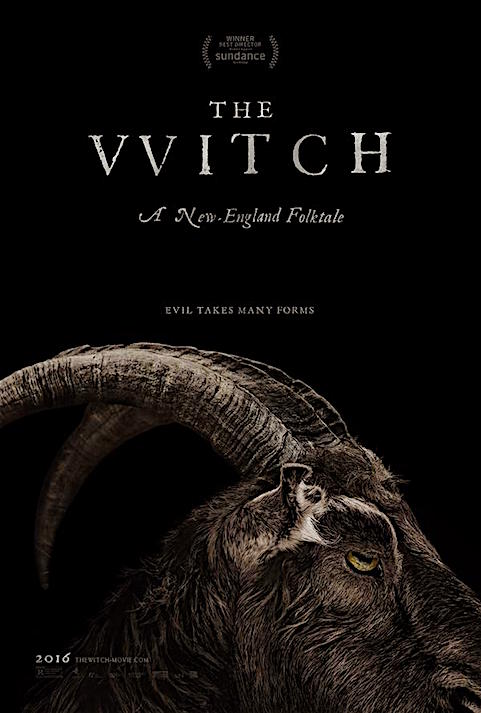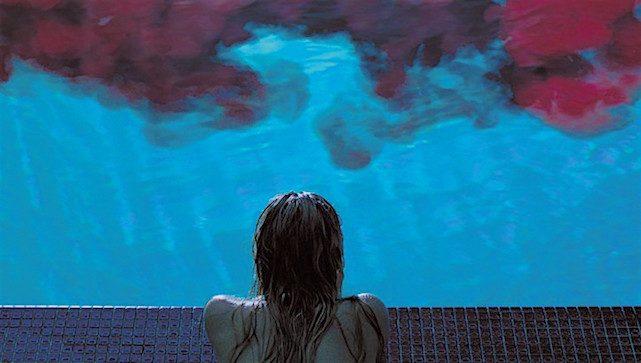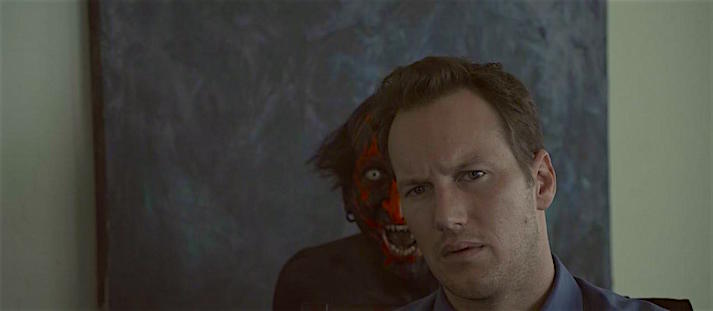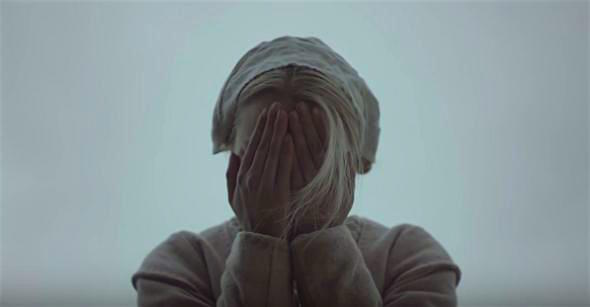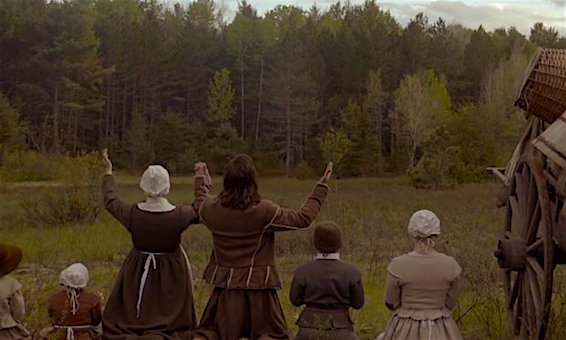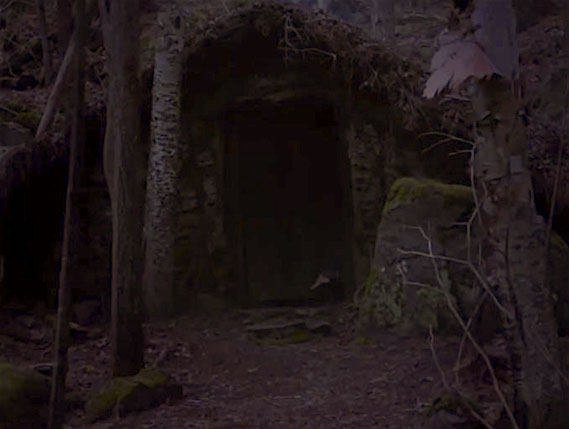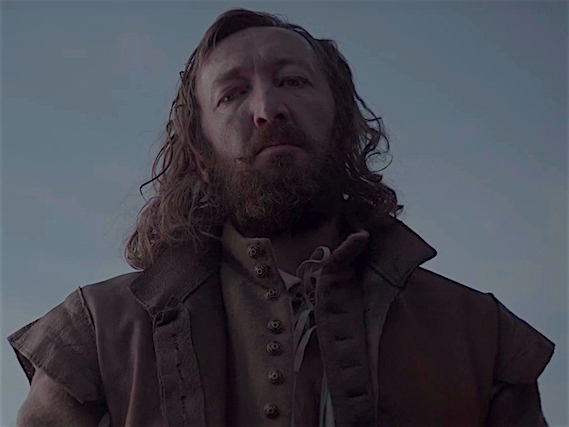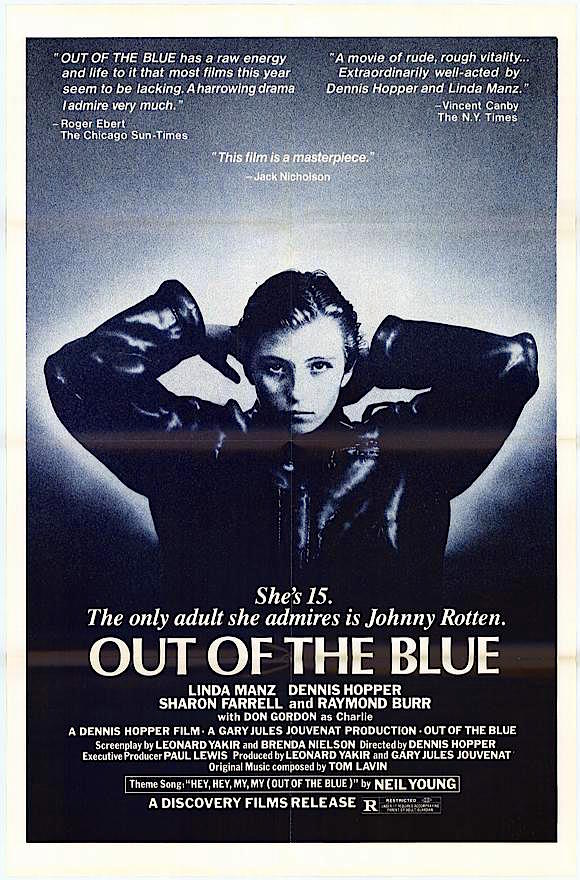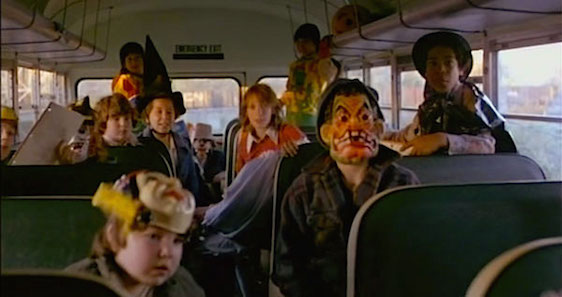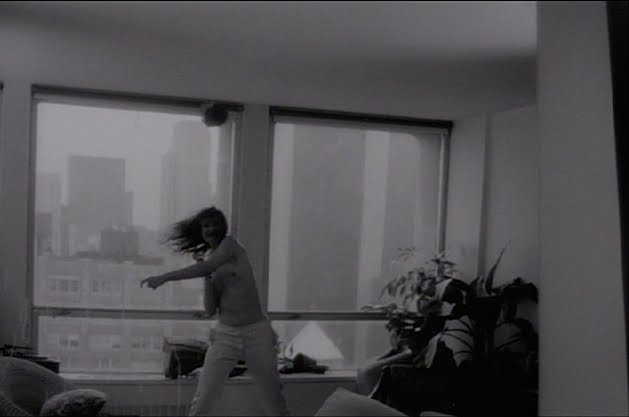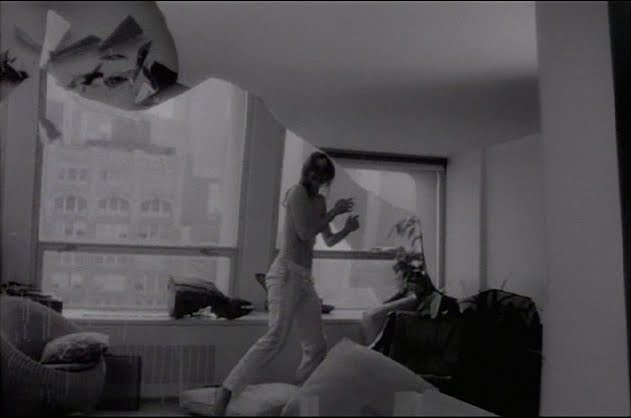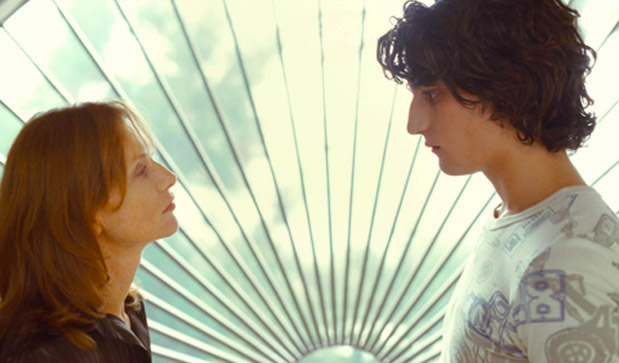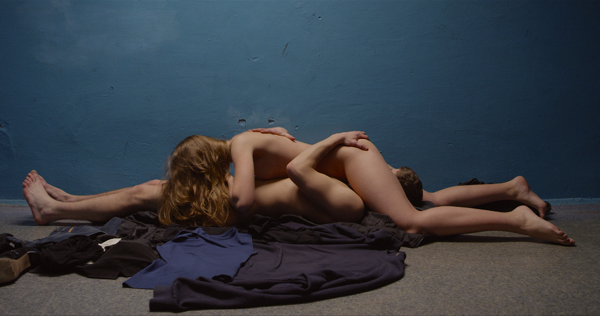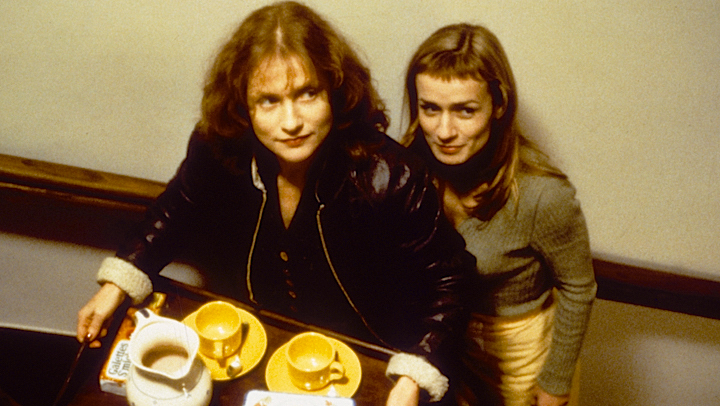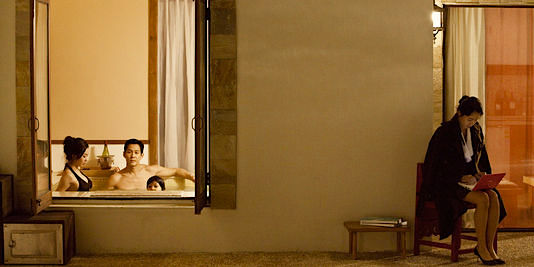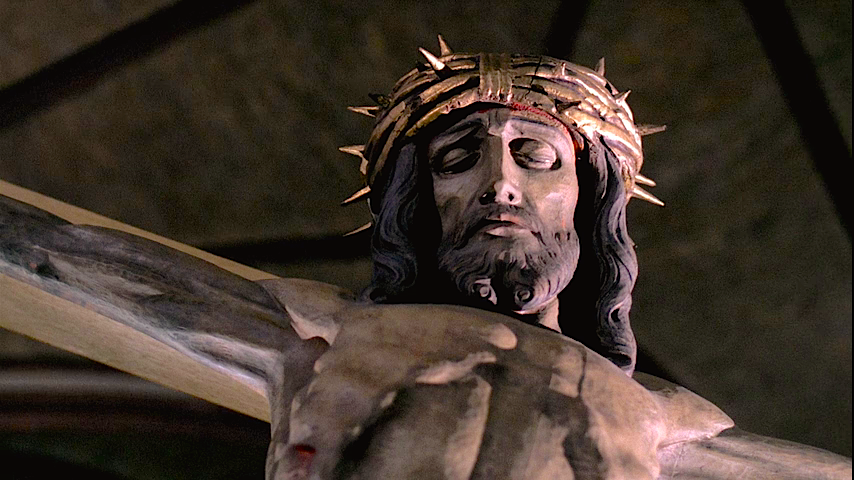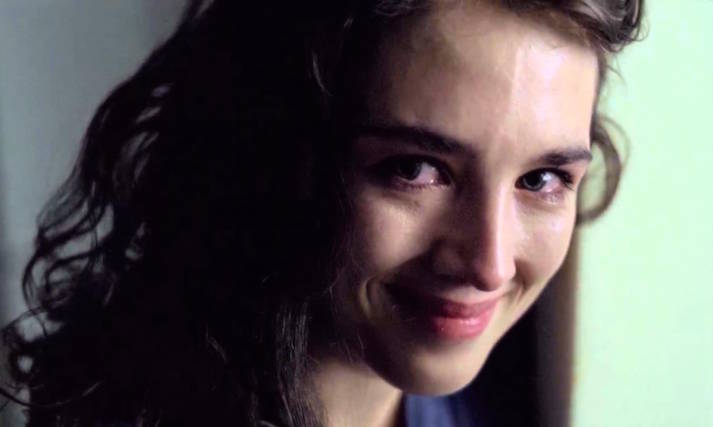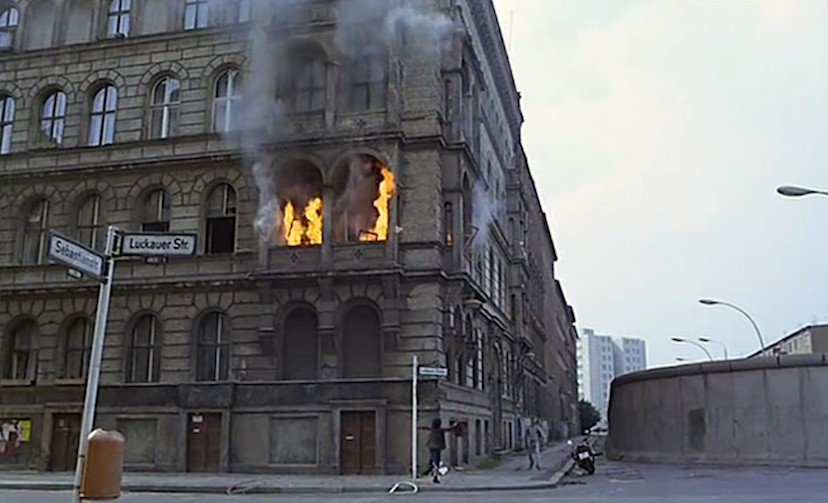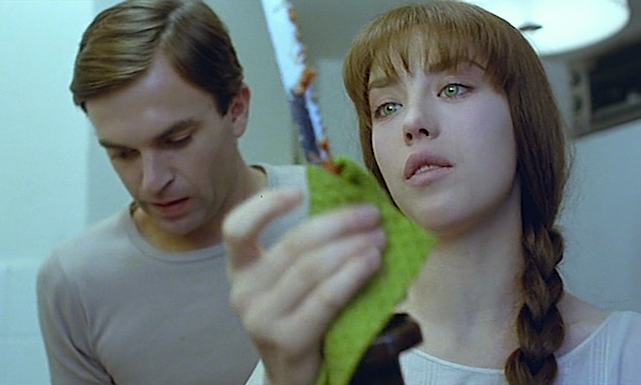Ever since Robert Eggers’s The Witch screened at the 2015 Sundance word of mouth praises for the film have pushed expectations through the roof. A24 opted to wait over a year before releasing the movie to cinemas. This decision was no doubt to build up audience anticipation. Their plan seems to have worked, but was marketing The Witch as a horror movie might not have been the best strategy.
While a great many have been left spellbound (pun intended) — it would seem an almost equal number of people have left the movie disappointed. Some have even felt bored by the movie. I among those who consider this film as a cinematic gem and a great example of the Art Horror genre. In my opinion Robert Eggers is a much needed breath of creative air to the current world of cinematic art. So I scratch my head when I hear/read cinephiles bash The Witch. Why don’t they all love it? Why is The Witch failing to capture all imaginations? How can someone see this low-budget film and not be impressed?
Well, easily.
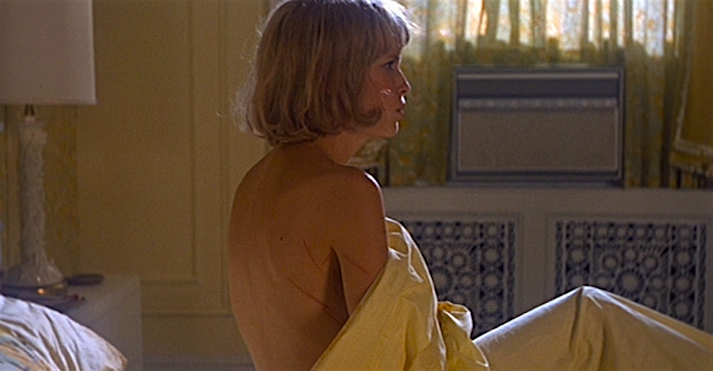
Has Mia Farrow been impregnated with the child of Satan or date raped by her husband?
Rosemary’s Baby
Roman Polanski, 1968
Cinematography | William A. Fraker
What constitutes a great horror movie? A film that scares us on some level seems an essential requirement, but is there a way to make the definition of that word fit us all as a group? Of course not. We are all scared and disturbed by different things and styles. There are two horror films which can both be easily defended as cinematic masterworks: Rosemary’s Baby and The Exorcist. Both of these films terrified audiences upon their initial releases.
What would happen if Roman Polanski were 35 years old in 2015 and Rosemary’s Baby had debuted at the 2016 Sundance Film Festival? Would it frighten audiences and be eagerly snapped up by A24? Let’s pretend it would. So it is February 2016 and you sit yourself down at a cineplex and watch it.
Are you pleased with Rosemary’s Baby as a horror film or did it make you chuckle and feel resentful because the “pay-off” failed to make you jump or dumbfound you in awe?
Sure you might admire William A. Fraker’s cinematography, the eccentric performances and the ambiguity of what is actually happening on the screen — but would this movie disappoint as a horror film?
I have a knee-jerk reaction to this “what if” scenario. I want to dig my feet into the sand and answer, “Yes! It is provocative, entertaining, creepy, amusing and most certainly haunts my mind long after I see it!”
However my knee-jerk might be a bit off.
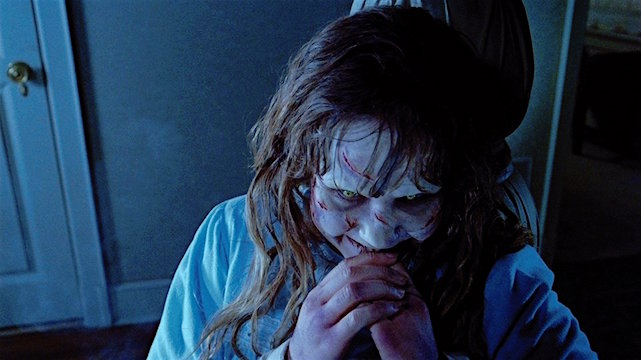
“Your mother sucks cocks in Hell.”
Linda Blair
The Exorcist
William Friedkin, 1973
Cinematography | Owen Roizman
Ideas of what constitutes a horror film have dramatically changed since 1968. This is no longer the 20th Century. We have become jaded to violence and horrific events depicted in film. Movies are no longer presented as “Events” and most audiences demand more than looming threat and ambiguities from horror films. A solid example of this is to revisit William Friedkin’s The Exorcist. Upon this film’s release in late 1973/early 1974, it literally caused an international sensation. Reports of heart attacks, fainting and full-on panic attacks in cinemas filled the news. Lines to ticket counters wrapped blocks and an endless slew of cinematic rip-offs soon littered cinemas for years to come. Even back in the early 1970’s there were people who found the grim horror film funny, but it would seem to have been a small minority of the film’s audience.
In 2000 a new remastered and cut of the film was released into cinemas. This was The Exorcist: Version You’ve Never Seen. I was in the cinema to watch the movie with a sold-out audience. Parents with babies, sullen teens and eager fans of the 1970’s flick filled the theatre. Endless chattering throughout the on-screen commercials and previews led me to expect that I’d be watching the movie with children running around, teens giggling and older folks calling for silence. Instead something odd happened. The entire audience sat in silence once the jarring music of Krzysztof Penderecki met the film’s title card. I saw this film with 3 friends from my office. I didn’t care for the new ending, but was satisfied that The Exorcist had stood the test of time. Only minutes later as we exited the building I began to hear people talk about how comical the movie was. Yet why had there been no laughs during the screening? The 2000 release still brought in a significant amount of money for Warner Bros.
For those who would dismiss both Rosemary’s Baby and The Exorcist as dark or even unintended comedy, it is important to access both films within the appropriate and respective contexts. By the time Rosemary’s Baby was released the Hippie Movement had taken a dark turn toward addiction, homelessness and the horrific introduction to The Manson Family truly crushed ideas of peace and harmony for many. Theories regarding the corruption of government was starting to brew over the top of the cultural pot. The important growth of the Women’s Movement had started to challenge the cultural status quo. Roman Polanski’s film worked on both the straight-on horror of the story presented, but it also offered plenty of ambiguous subjectivity to allow viewers to see the film as hallucination or even as a metaphor. When The Exorcist was released filmmakers had already begun to push the cinematic envelope far beyond what was accustomed. However, no one had really pushed it as far as William Friedkin’s film.
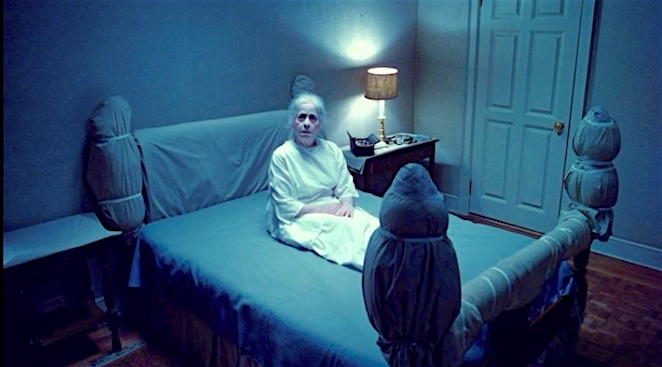
The guilt that will not die. A demon takes the form of a deceased mother…
The Exorcist
William Friedkin, 1973
Cinematography | Owen Roizman
Marketed as a horror film, The Exorcist presented horror in a whole new way. The Exorcist takes itself very seriously and the actors perform as if cast in a highly important work of dramatic cinema. This was horror movie gone the way of The Actors Studio with elevated production values. The Exorcist was missing most of the normal cinematic clues that it was a horror film. It also depicts the sadistic and perverse possession of an innocent little girl. In 1973 / 1974 no one had ever seen a child in such peril or scenes this shocking. This was a film of firsts.
And of course there is a whole other level of understanding at play in this iconic film — a reflection of its time. The government was letting us down from the Watergate Hotel to a meaningless war that continued to ravage despite overwhelming protest. The post Hippie Movement had evolved into the Sexual Revolution and Drug Culture was causing some serious cultural rifts. Parents no longer felt any control over their children. The Exorcist was a particularly incisive cut into the once communal ideas of cultural aspects once considered sacred. It expertly captured the Western World’s deepest fears into a manifestation of demonic possession of innocence that could no longer be protected.
No matter how you want to look at it, this was a whole different kind of world 48 / 43 years ago.

“The film which you are about to see is an account of the tragedy which befell a group of five youths…”
Title Card
The Texas Chainsaw Massacre
Tobe Hooper, 1974
Horror films took a swift and dark turn that blended the fantastical with reality. What many might funny now, were visualizations of all too real horror for many in the late 1960’s to early 1970’s. Kobe Hooper’s drive-in movie was far more realistically articulated than anything that had arrived there with the possible exception of his earlier The Last House on the Left. The Texas Chainsaw Massacre was really not all that graphic, but it sent audiences into a horror of a different order. These two films manifested horrors of parents as well as their children.
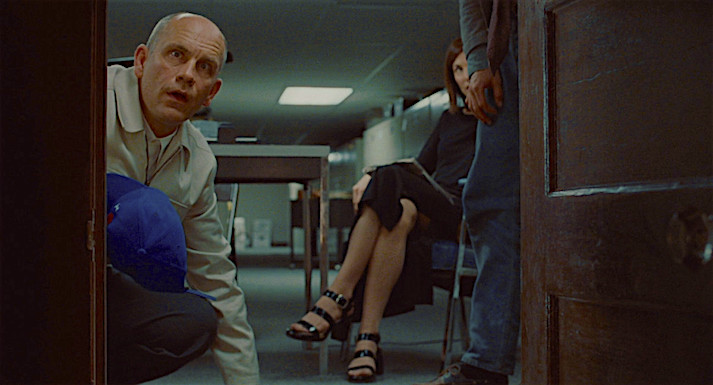
“…Consciousness is a terrible curse. I think. I feel. I suffer.”
John Malkovich looks into a portal that leads to his own mind.
Being John Malkovich
Spike Jonze, 1999
Cinematography | Lance Acord
The next film that comes to my mind will most likely lend a glimpse into what scares me. I saw Being John Malkovich on the afternoon it opened in Boston. I had heard nothing of it. I walked into that cinema free of any anticipation of what I was about to see. I wanted to see it because I quite like both John Cusack and Catherine Keener. While there was some very comical moments, this movie creeped me out. That night I met some friends at a bar and told them that Being John Malkovich was exceptional but quite disturbing. I think I actually called it a comical horror movie.
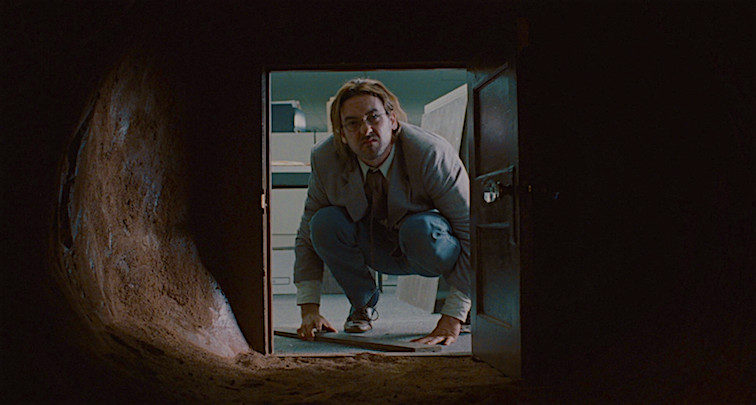
Dissatisfied, misunderstood and lonely. John Cusack contemplates falling into the consciousness of another…
Being John Malkovich
Spike Jonze, 1999
Cinematography | Lance Acord
I would later get questions from my pals who found the movie awesome, but not at all disturbing or horrifying. But for me the idea of someone finding a way into my mind or even worse, me being stuck in the brain of another is an absolutely horrifying concept. Talk about an identity crisis from Hell. Being John Malkovich still freaks me out a bit. I usually have at least one nightmare after having seen it.
Perhaps the most polarizing horror film of my time is 1999’s The Blair Witch Project. Unlike with Spike Jonze’s movie, I was well aware of TBWP. We all were. And I saw it during its first weekend run. This film had created a whole new way to market a movie.

Heather Donahue turns the camera on herself as she panics and fears she is facing her end.
The Blair Witch Project
Daniel Myrick / Eduardo Sanchez, 1999
The cinema was sold out. A good number of the audience was frustrated by what they saw. For me it was a positive horror experience. I had not ever seen a film quite like it. As Heather Donahue slipped into hysteria, I felt her panic. I’m not a person who enjoys camping. The very idea is scary to me. So this film already offered something that I find creepy — nature after dark. I quite admired the lo-fi ingenuity of both Daniel Myrick Eduardo Sanchez. The online marketing blitz was fascinating. Please note that the Internet was still kind of new. The fake documentary that screened on television sporadically at the time was equally odd. It seemed to be a real documentary. The film really felt like found footage. All three characters seemed like people you might know. Their shared and respective fits of rage and panic felt like the real thing.
The movie made a ton of money and spawned an endless stream of found footage horror films continuing to this day. The difference is that other filmmakers would learn to avoid aspects of The Blair Witch Project that deeply annoyed audiences. If ever a horror movie arrived carrying strong word-of-mouth it was The Blair Witch Project.
To say that it fully satisfied audience expectations would not be correct. Many found the jittery camera movements nauseating. Others found the whole film to be tease for over an hour resulting in deliverance of a limp pay-off. But I was among those who was impressed by the movie. I was not so impressed from a technical standpoint, but the style matched the plot. I liked it, but I could understand the reservations of others.

A very clever use of TV and Internet marketing
The Blair Witch Project
Daniel Myrick / Eduardo Sanchez, 1999
After wowing audiences at The Cannes Film Festival in 2014, David Robert Mitchell’s It Follows was released to limited cinemas and shortly after to VOD in 2015. The surreal and odd film received a great deal of red-hot press and strong word-of-mouth prior and just after it came out in the US. A meticulously crafted low-budget film that looks a great deal better than most low budget films, It Follows is far more than your average horror film. As praise mounted the movie became a painful example of falling victim to heightened expectations from horror movie fans. Even worse, Mitchell’s clever and disturbing little movie had sparked debate among Film Critics and cinephiles regarding its worth as Film Art.
How in the world do we define terms like “Horror Movie” and “Film Art” in a way to determine which films fit within each? More importantly, who has the right to set the terms?
I might detest movies like I, Frankenstein or Pixels, but to some these films are fantastic and should be considered “Film Art.” What gives me the right to argue their points down? No one or organization issues this right. Even if such a person or institution existed I would proudly rebel against it.
The subjectivity of art is what makes it great. And the freedom to voice opinions and evaluations is what makes being a cinephile fun, but lately differing opinions have really taken an ugly turn.
Our 24/7 connection in the 21st Century has created a platform on to which international magazines, paid Film Critics and every member of the Audience can have an equal voice. This provides an awesome potential for the individual. From blogs like this to the exceptional podcasts, people now have the power.
The downside to this is that more than a few have opted to use that platform to be cruel and mean-spirited.
Such is the sad way of human nature. But every once in a while great films get unfairly gut-punched by the meanest and loudest voices. The result is that many individuals who might have been open to evaluating a movie that has gotten some negative feedback are led to believe that doing so would be jump on the wrong bandwagon. In other words, people are afraid of being bullied or appear ignorant to take a chance on a particular film. The loudest and often most cruel voices manage to force a hand in keeping others from making up their own minds.
It Follows is not for all members of the collective audience. Very few, if any, movies will entertain everyone, but the quality of a film should not be made to serve as a barometer by which individuals are judged and causally dismissed as if each were a movie themselves. A person should be comfortable in being able to state she/he enjoyed a movie without fear of being flamed by others on the platform.
David Robert Mitchell’s surreal film explores everything from fears associated with sex to sexually transmitted diseases and all the way around to ideas about potential dangers of friendship and meditations on death. It is also an outstanding example of how much can be done with a very limited budget. It Follows is a great looking film.
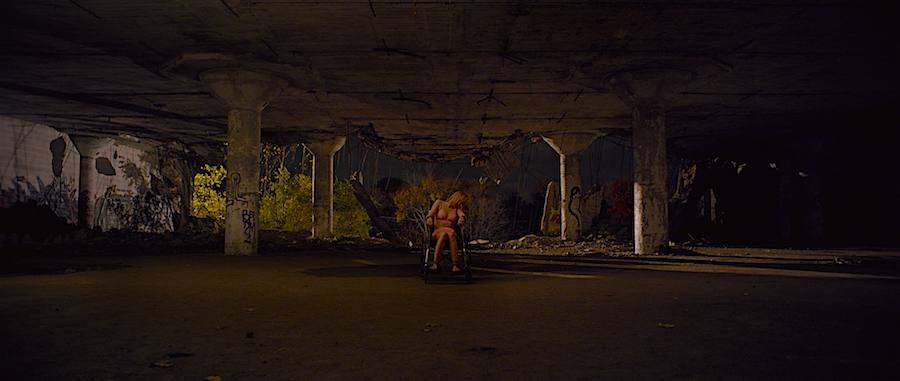
“Okay, like I told you, all you can do is pass it on to someone else.”
It Follows
David Robert Mitchell, 2015
Cinematography | Mike Gioulakis
When I first saw It Follows I was blown away. I was invited to an advance screening. I had only read a couple of things about it at the time. I came out of the viewing experience disoriented and loved the film. I thought of it as Surrealism. I did not immediately identify the movie within the Horror Film genre. To be honest, my biggest concern was trying to determine if the movie had taken place in the not so distant past or present day.
The negative backlash against It Follows caused a number of folks to avoid the movie. I’ve noted a strong number who have seen it via DVD or streaming and loved it and wished they could have seen it on a big screen or sooner. Sadly I’ve also come across a rather large number of folks who loved it but avoid ever stating or sharing this fact for fear of being flamed by fellow bloggers, twitters and other Internet Communities. This really bums me out. It is all too easy to think these people are weak and need to assert themselves. For many the Internet which had once welcomed them has de-evolved to a High School-like experience in which they feel the need to conform.

“This may hurt a little.”
Perspectives go askew in more way than several.
Seconds
John Frankenheimer, 1966
Cinematography | James Wong Howe
The film genre of horror has always been a wide genre. It includes the silly and inane as well as well as the highly artistic and innovative. It can also bleed more easily into other genres than others. A good example of this is John Frankenheimer’s Seconds. This movie is usually considered a “thriller” or “drama” but it has also been read as “science fiction.”
I’ve always considered Seconds to be a horror film of the highest order, to which I assign the label “Art Horror.” Frankenheimer’s vision depicts what is perhaps one of humanity’s greatest fears: aging and mortality. Look just a bit deeper and you will notice the capture of committed relationship horror. Aging and life’s ultimate natural end is not for sissies. Nor is a relationship such as marriage. As we see in Seconds, love may spark passion but down the line that passion often slips away. If there is no love between life partners, facing the natural perils of life can be hard if not impossible. Seconds has enjoyed a re-evaluation thanks to the folks at The Criterion Collection. Label or genre it as you like, but this is a disturbing movie from all aspects. This is a generally accepted film. Sadly we are not so open to respect for a newer movie like It Follows.
In 2007 yet another found footage movie found its way to cinemas. Oren Peli’s Paranormal Activity made a good deal of money for very little financial investment. I paid to see it. It was most certainly a horror film, but it failed to interest me and it certainly failed to scare me. It has spawned a franchise that continues to make money from one idea. James Wan’s Insidious also enjoyed success and has spawned at least one sequel. I saw it as well. Once again, Insidious is most certainly a horror movie. It attempted to offer a bit more thought and ideas than Paranormal Activity and featured some decent acting. The idea of a child in a coma and his parents trying to bring him back does provide some interest, but this film was focused on making the audience jump.
No new ground here. Nothing wrong with that if it floats your boat. Movies like this do not even get my boat a foot from its pier.
Robert Egger’s The Witch is currently generating an oppositional mix of awed praise to condemnation. The core of this largely online battle seems to be annoyance that The Witch has been sold to audiences as a horror film. A great number of the audience are frustrated if not straight up angry that The Witch failed to be scary by their definitions. This is a debate that has left me more than a little confused. Had we all seen the same movie? I did think that many might be disappointed to not find themselves jumping in their seats or clinging to arm rests, but the whole Anti The Witch attitude against the film has caught me by surprise.
True enough A24 should have gotten The Witch out sooner. Almost a year worth of praise has most definitely put the movie in the uncomfortable position of living up to hype.
If you’ve not yet seen The Witch, there will be some spoilers to follow. Simply stop reading. If you are not sure you will see it then reading should not offer a problem.
Robert Eggers’ film has been carefully researched. Almost all of the film’s dialogue has been lifted from 17th Century records which transcribe reported events of suspected or assigned evil witchery. The movie is also closely aligned with this sort of folklore and fear of that time. The Witch captures the feeling / ambiance that matches my idea of what life must have looked and been like within the unsettled 17th Century America to which the Puritans and other settlers ventured. I could almost smell this world flowing out from the movie screen. Eggers may have only had a budget of $1.5 million, but this movie looks like it cost a great deal more. Carefully framed by Jarin Blaschke’s camera, The Witch manages to be both lush and rustically threatening all at once. The film works on two levels from beginning to end.***
On the one hand the film can be viewed as a horror film based on ancient folklore regarding Satan and Satanic Ritual lensed as reality. The idea that what one perceives as little more than silly fairy tale is given life as something deeply menacing, horrible and real. The Witch is also smart enough to function on a less literal levels. What we see unfold could be a manifestations resulting from misunderstood happenings to the unimaginable struggles for survival in an unknown place. And within the metaphorical read of the movie, the confusions and frustrations of two children on the verge of adulthood struggle with both the urge to rebel against and fear the changes/longings they experience under the repression of a puritanical daily life.
A pious family is banished from their Puritan Settlement for being a too hardcore with Christian beliefs. This in of itself is more than a little telling. It seems that their fellow settlers who left England in pursuit of an even more repressed life now feel that this particular family has taken worship of Christ to an unacceptable level. The father’s fevered preachings of faith are so intolerant that his words seem to border on perversity. The father stands proud and happily accepts his family’s fate of banishment. We follow the family on their devout journey for a new home. When Father decides he has found the perfect clearing of land for their own settlement, all fall to their knees and pray for thanks and blessing. It is not clear how long it takes the family to construct a bone-bare basic home, a small barn, a fence and the beginnings of a small crop — but they have managed to do it. But problems are not far behind end everything begins to crumble around them in horrifying ways.

Ralph Ineson as the father leads his family in prayer before they begin to eat a very sparse dinner.
The Witch
Robert Eggers, 2016
Cinematography | Jarin Blaschke
The mysterious loss of a child, a failing crop, lack of food and an approaching winter sends this family into a deep crisis.
Could this crisis be a test from God or the work of Satan? The first indication that something far sinister is gripping the family presents itself very early in the film. Eldest child and daughter, “Thomasin” played with searing naturalism by Anya Taylor-Joy is to keep an eye on her youngest sibling. A cute baby lies in front of Thomasin. She begins to play a game of “peek-a-boo” with the baby. After a couple of rounds she covers her eyes but when she removes her hands, the baby has simply vanished. We see that the baby has been magically stolen by a naked crone of a witch. It becomes apparent that this elder witch has butchered the baby, devoured the meat and spread the babe’s blood all over her body. Is Eggers camera meant to be taken literally or is this the POV of a young woman’s darkest fear? We really do not know.
What we do know is that the family has no choice but to assume the very logical worst. The baby must have been snapped up by a wolf. Thomasin never seems to make a big point of the fact that there could be no way a wolf could have taken the baby so quickly and without a sound. And if she feels guilt it would appear to be suppressed for fear of her parents wrath. The mother slips into depression and clearly holds her eldest child responsible. It should be noted that the style in which Eggers shoots the old witch is different to what we have seen displayed in the movie.
We soon discover that the eldest son has feelings for his beautiful sister that are not appropriate. He is aware of this, but does his best to hide it. While it is never fully articulated, there is a sense that Thomasin is aware of her brother’s interest. She does not encourage it, but there is a vague sense that she enjoys the attention. She passively finds ways to disguise her touches on her brother as innocent when their might be a shared desire at play in these touches. There are a pair of twins who are now the youngest of the clan. At first it would seem these two playful children are simply a bit spoiled, but their behavior is revealed to be far more sinister. They have taken to playing with the family’s black goat to which they have assigned the name Black Phillip. They claim to speak with him and that he has told them things. Most of which are more than a little worrying. The family’s misfortunes only continue. Eavesdropping, keeping secrets, lying, anger, hunger, depression and accusations soon engulf this family. Along the way we see horrific incidents that may or may not be actually happening. A goat appears to provide blood instead of milk. A seemingly ready to consume chicken’s egg is dropped to reveal a fully formed chick dead and bloody. An innocent rabbit appears to the father and his son but seems to serve as some sort of hiding beast of omen. Black Phillip does some very odd movements for the twins. The eldest boy stumbles upon what appears to be a witch’s lair. A beautiful woman emerges with an apple and gives the child an adult kiss. This woman soon appears to turn into an old crone. Thomasin takes to staring into the woods that border the newly created home land.

An odd plaything for an odd pair of twins… Meet Black Phillip.
The Witch
Robert Eggers, 2016
Cinematography | Jarin Blaschke
The father, expertly played by Ralph Ineson, has the look of a somehow perverse version of a stereotypical idea of Jesus. He seems to be the most conflicted by the events that are pushing the family beyond the edge of reason. Before long their eldest son falls prey to what appears to be witchcraft or black magic and dies. The mother slips further into hysteria. Ineson’s William is torn by accusations from the twins that Thomasin has been consorting with The Devil. Most especially due to the fact that they claim it is Black Phillip who has informed them of this as well as Thomasin herself.
But continuing events which he is unable to explain push him to put all three children into the small barn. He barricades it so they can’t leave, but the twins’ Black Phillip is sealed in with them. Disturbing visions come to the mother in her fevered night’s sleep. William emerges in the morning to discover that the barn has been essentially destroyed, the twins dead and Thomasin lies on the ground covered in the twins’ blood. Tragedy strikes yet again leaving Thomasin alone among the carnage. Exhausted and traumatized she makes her way into the hovel of a home, sits at the table and allows her head to fall.

Locked up in the barn with Black Phillip or The Devil?
The Witch
Robert Eggers, 2016
Cinematography | Jarin Blaschke
Is Thomasin sleeping? It is not entirely clear but it would seem she is awoken by a male presence. Could it be the vile Black Phillip? It is. But then perhaps it isn’t.
Thomasin does not seem particularly surprised. Why should she? She has witnessed what can she can only attribute to Satan’s darkest magik destroy her family. She demands or rather “conjures” Black Phillip to speak with her. We do not see the goat speak but we hear a deep male voice respond. A conversation ensues in which he asks the young girl what she might want from life. The voice assures her she will live life “deliciously” if she will simply sign a book that has magically been sat before her. Thomasin hesitates, but is instructed to remove her shift and that he will guide her hand to sign her name in the book.
The last images we see are of a nude Thomasin walking toward a gathering of nude witches in the midst of a Satanic ritual. As the chanting reaches a pitch, the witches began to levitate and fly upward. A calming look comes over Thomasin’s face and she begins to levitate toward the sky.
And here is a bit of cinematic magic — in another director’s hands this moment in the film might have come across in another way. But under Robert Eggers steady direction, this young woman’s take to flight is not a moment of female freedom or rebirth. This is the film’s most chilling moment. We see a young woman ascend naked toward her destiny in celebration of her evilness. She embraces all that is evil and leaves all kindness behind. It is a nightmare awakening and is horrifying.
The Witch weaves a spell that takes on a slow burn within the mind. I was never afraid as I watched the movie unfold, but I was disturbed as much as I was fascinated. Hours after I saw The Witch, it began to haunt my thoughts. This is a movie that stays with you.
A24 has employed two tag lines to promote The Witch:
Evil takes many forms and A New-England Folktale — both makes sense for the film. Each expresses the two ways in which the film can be viewed.
Neither tag line makes any promises that the movie is unable to keep. The Witch may not make you jump in your seat or cling to your arm rests, but you very well might squirm. And it is highly likely that you will ponder what you have seen long after you have left the cinema.
A work of Art Horror that deserves praise. I think The Witch comes close to being a brilliant exercise in Art Horror. Make fun of me, flame me and dismiss me if you wish.
***There is a third “read” to be found while watching and evaluating The Witch. While this reading is more than a bit dark, there is correlation to be made between a metaphorical rejection of patriarchal ideas regarding the identity of women. A story which leads a young woman out of repression, oppression and up to the sky in a celebration of her own identity, sexuality and power. The thing is that most feminist thinkers are likely to take exception to using such actions as vivisection murder of male baby and ultimate violent destruction of a family unit. However, we are dealing in metaphors here.
Matty Stanfield, 2.25.2016

